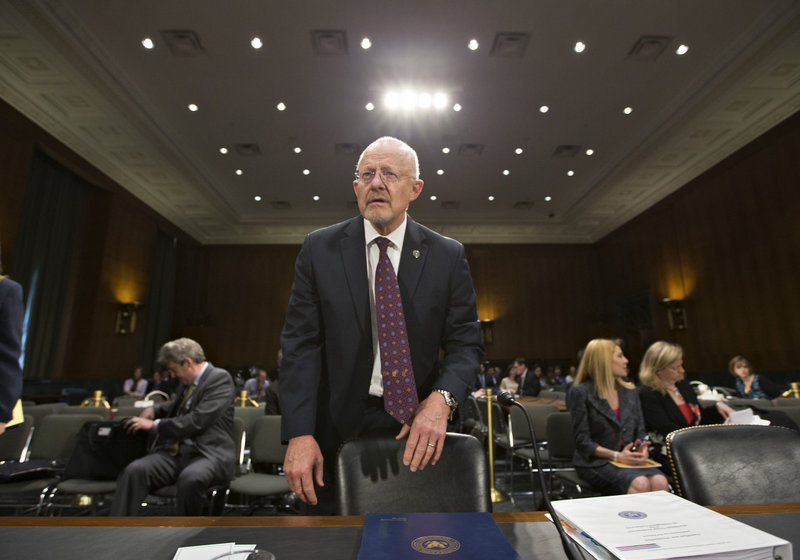U.S. spy agencies have built an intelligence-gathering colossus since the attacks of Sept. 11, 2001, but remain unable to provide critical information to the president on a range of national security threats, according to the government’s top secret budget.
The $52.6 billion “black budget” for fiscal 2013, obtained by The Washington Post from former intelligence contractor Edward Snowden, maps a bureaucratic and operational landscape that has never been subject to public scrutiny. Although the government has annually released its overall level of intelligence spending since 2007, it has not divulged how it uses those funds or how it performs against the goals set by the president and Congress.
The 178-page budget summary for the National Intelligence Program details the successes, failures and objectives of the 16 spy agencies that make up the U.S. intelligence community, which has 107,035 employees.
The summary describes cutting-edge technologies, agent recruiting and ongoing operations. The Washington Post is withholding some information after consultation with U.S. officials who expressed concerns about the risk to intelligence sources and methods. Sensitive details are so pervasive in the documents that The Post is publishing only summary tables and charts online.
CIA SPENDING SURGES
“The United States has made a considerable investment in the Intelligence Community since the terror attacks of 9/11, a time which includes wars in Iraq and Afghanistan, the Arab Spring, the proliferation of weapons of mass destruction technology, and asymmetric threats in such areas as cyber-warfare,” Director of National Intelligence James Clapper said in response to inquiries from The Post.
“Our budgets are classified as they could provide insight for foreign intelligence services to discern our top national priorities, capabilities and sources and methods that allow us to obtain information to counter threats,” he said.
Among the notable revelations in the budget summary:
• Spending by the CIA has surged past that of every other spy agency, with $14.7 billion in requested funding for 2013. The figure vastly exceeds outside estimates and is nearly 50 percent above that of the National Security Agency, which conducts eavesdropping operations and has long been considered the behemoth of the community.
• The CIA and NSA have launched aggressive new efforts to hack into foreign computer networks to steal information or sabotage enemy systems, embracing what the budget refers to as “offensive cyber operations.”
• The NSA planned to investigate at least 4,000 possible insider threats in 2013, cases in which the agency suspected sensitive information may have been compromised by one of its own. The budget documents show that the U.S. intelligence community has sought to strengthen its ability to detect what it calls “anomalous behavior” by personnel with access to highly classified material.
• U.S. intelligence officials take an active interest in foes as well as friends. Pakistan is described in detail as an “intractable target,” and counterintelligence operations “are strategically focused against the priority targets of China, Russia, Iran, Cuba and Israel.”
• In words, deeds and dollars, intelligence agencies remain fixed on terrorism as the gravest threat to national security, which is listed first among five “mission objectives.” Counterterrorism programs employ one in four members of the intelligence workforce and account for one-third of all spending.
• The governments of Iran, China and Russia are difficult to penetrate, but North Korea’s may be the most opaque. There are five “critical” gaps in U.S. intelligence about Pyongyang’s nuclear and missile programs, and analysts know virtually nothing about the intentions of North Korean leader Kim Jong Un.
‘HARD CHOICES’
Formally known as the Congressional Budget Justification for the National Intelligence Program, the “Top Secret” blueprint represents spending levels proposed to the House and Senate intelligence committees in February 2012. Congress may have made changes before the fiscal year began on Oct 1. Clapper is expected to release the actual total spending figure after the fiscal year ends on Sept. 30.
The document describes a constellation of spy agencies that track millions of individual surveillance targets and carry out operations that include hundreds of lethal strikes. They are organized around five priorities: combating terrorism, stopping the spread of nuclear and other unconventional weapons, warning U.S. leaders about critical events overseas, defending against foreign espionage and conducting cyber operations.
In an introduction to the summary, Clapper said the threats now facing the United States “virtually defy rank-ordering.” He warned of “hard choices” as the intelligence community — sometimes referred to as the “IC” — seeks to rein in spending after a decade of often double-digit budget increases.
This year’s budget proposal envisions that spending will remain roughly level through 2017 and amounts to a case against substantial cuts.
“Never before has the IC been called upon to master such complexity and so many issues in such a resource-constrained environment,” Clapper wrote.
The summary provides a detailed look at how the U.S. intelligence community has been reconfigured by the massive infusion of resources that followed the Sept. 11 attacks. The United States has spent more than $500 billion on intelligence during that period, an outlay that U.S. officials say has succeeded in its main objective: preventing another catastrophic attack in the United States.
The result is an espionage empire with resources and reach beyond those of any adversary, sustained even now by spending that rivals or exceeds the levels reached at the height of the Cold War.
This year’s total budget request was 2.4 percent below that of fiscal 2012. In constant dollars, it was roughly twice the estimated size of the 2001 budget and 25 percent above that of 2006, five years into what was then known as the “global war on terror.”
Through extrapolation, experts have estimated that Cold War spending likely peaked in the late 1980s at an amount that would be the equivalent of $71 billion today. Spending in the most recent cycle surpassed that amount based on the $52.6 billion detailed in documents obtained by The Post, plus a separate $23 billion devoted to intelligence programs that more directly support the U.S. military.
DETAILS WITHOUT PRECEDENT
Lee Hamilton, an Indiana Democrat who was a former chairman of the House Intelligence Committee and co-chairman of the commission that investigated the Sept. 11 attacks, said that access to budget figures has the potential to enable an informed public debate on intelligence spending for the first time, much as Snowden’s disclosures of NSA surveillance programs brought attention to operations that had assembled data on nearly every U.S. citizen.
“Much of the work that the intelligence community does has a profound impact on the life of ordinary Americans, and they ought not to be excluded from the process,” he said.
“Nobody is arguing that we should be so transparent as to create dangers for the country,” he said. But, he said, “there is a mindset in the national security community — leave it to us, we can handle it, the American people have to trust us. They carry it to quite an extraordinary length so that they have resisted over a period of decades transparency. … The burden of persuasion as to keeping something secret should be on the intelligence community, the burden should not be on the American public.”
Experts said that access to such details on U.S. spy programs is without precedent.
“It was a titanic struggle just to get the top-line budget number disclosed, and that has only been done consistently since 2007,” said Steven Aftergood, an expert at the Federation of American Scientists, a Washington organization that provides analyses of national security issues. “But a real grasp of the structure and operations of the intelligence bureaucracy has been totally beyond public reach. This kind of material, even on a historical basis, has simply not been available.”
Send questions/comments to the editors.




Success. Please wait for the page to reload. If the page does not reload within 5 seconds, please refresh the page.
Enter your email and password to access comments.
Hi, to comment on stories you must . This profile is in addition to your subscription and website login.
Already have a commenting profile? .
Invalid username/password.
Please check your email to confirm and complete your registration.
Only subscribers are eligible to post comments. Please subscribe or login first for digital access. Here’s why.
Use the form below to reset your password. When you've submitted your account email, we will send an email with a reset code.